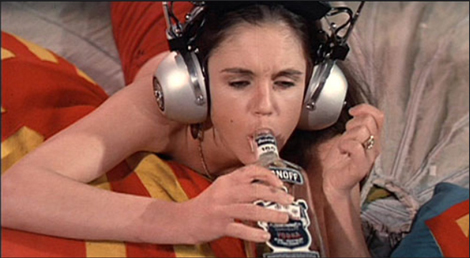One of the things that always troubled me about Andy Warhol’s legacy was the matter of people who got elevated and left behind. It is quite one thing to sign your name to a found object, but a whole other matter to treat people as found art.
Warhol could be quite mean about this. He might confer the status of superstar on a troubled person, and then just as quickly withdraw it when they acted like one. The person who suffered most acutely under this regime was Edie Sedgwick. Sedgwick met Warhol at the tender age of 21. She had already survived a stay in the mental hospital (the official reason was anorexia) and the suicide of two brothers. She was glamorous, but very insecure. She was in the dubious position of being incredibly famous for being famous. Although she acted in early Warhol films, these were rarely screened. She appeared next to Andy on TV shows and in magazine spreads during Warhol’s trajectory to fame. Within a year she had become too much work for Warhol, and he elevated a new girl to her spot. When she struck out on her own to parlay her superstardom into a career, things quickly went from bad to worse.
In 1967 filmmakers John Palmer and David Weisman decided to use a bunch of mostly abandoned Warhol superstars in a real fictional film (Ciao Manhattan) based on the ’60s New York scene. They were able to enlist Paul America as her costar, along with cameos by Bridget Polk, Viva, Baby Jane Holzer and French director Roger Vadim. In the film Sedgwick was to play Susan (based completely on herself) with a pretty sketchy script and unreliable costars. (Paul America’s last scenes were filmed in prison). When America and Sedgwick went missing, filming was suspended.
In 1970, they decided to use the finished material as flashbacks. Sedgwick was recorded recounting her time at The Factory. This oral account was whatever passed for a narrative thread. By this point she was living back at home in her parent’s empty pool. (recreated for the movie at the mansion of pioneer/tycoon “Lucky” Baldwin in Arcadia, CA). The 1970 segments are in lurid color. Sedgwick is a living train wreck, and the “found” performance she gives is cringe-inducing in its verisimilitude. (She overdosed on alcohol and barbiturates in November, 1971, before editing was completed.) The framing device for the finished product was a not very bright lad from a flyover state. He finds Sedgwick hitchhiking while too stoned to stand. Her jacket hangs open to reveal a recent real life breast job. When he returns her to her distracted mother, she determines that his dream is to build a flying saucer, and hires him to teach Sedgwick how to build one. What unfolds is a painfully out of control ruined superstar recounting her past glories to somebody too lacking in nuance to even know how to respond. Aside from the brilliant clips of Bridget Polk in the flashbacks, one might regard this as the first and saddest reality show ever.


